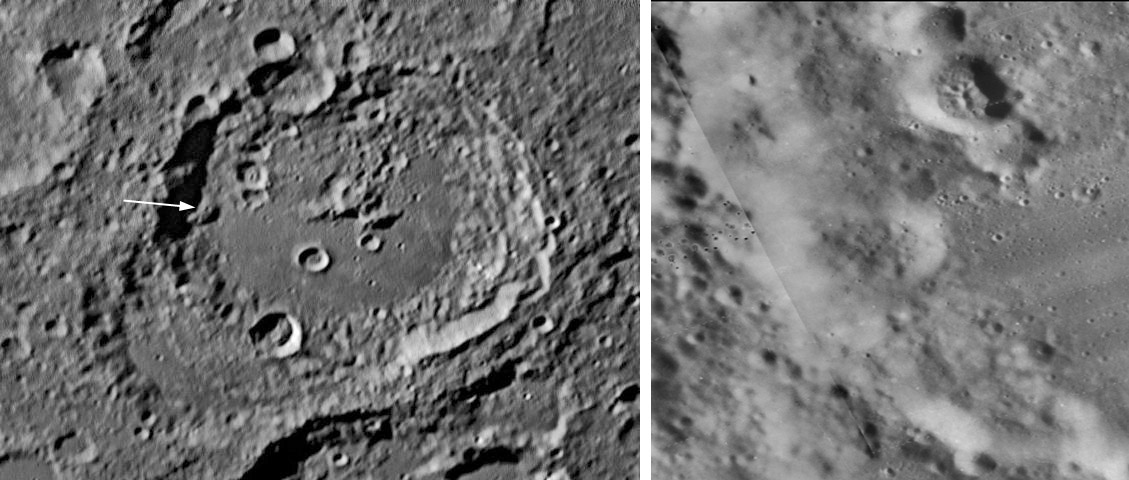October 18, 2008
Nope

left image by Giancarlo Favero, Italy, and right Lunar Orbiter IV image from Map-A-Planet
Giancarlo noticed a rounded hill that looked dome-like on his recent image (left) of Maurolycus. With these illumination conditions the feature appears to be hemispherical with a pit at its summit and another near its southern edge. If this is a dome it is an exciting discovery because highland domes are rare. A closer look (right) with a Lunar Orbiter image makes the volcanic interpretation less likely. The feature is heavily pitted and the summit pit is hardly visible under this higher illumination. It is possible that this is a piece of the original rim that long ago slid down to the crater floor, and subsequent impacts pitted it's surface. The smooth floor of Maurolycus is younger because it has fewer impact craters. Domes are volcanic landforms, but there is little compelling evidence for volcanism in the highlands. Thus the paucity of highland domes is consistent with the general lack of highland sinuous rilles and dark halo craters. Volcanism was rare in the highlands because the lunar nearside crust is thick, typically 30-40 km, except where impact basin formation greatly thinned and fractured it. Volcanic domes, sinuous rilles and flow fronts occur on the basaltic maria that erupted into and around the basins.
Chuck Wood
Technical Details
21 August 2008, 1h 35m UT.
Related Links
Rükl plate 66
Yesterday's LPOD: Telescope Eclipses Moon
Tomorrow's LPOD: Bumpy, Lumpy And Where?
COMMENTS?
Register, Log in, and join in the comments.



